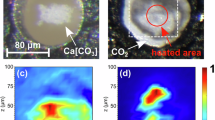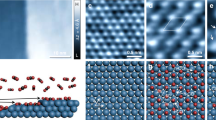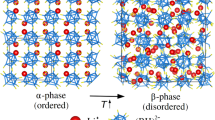Abstract
IN the letter above, which I had the opportunity of reading in manuscript form, Goldfinger and Lasareff calculate the heat of dissociation of CO on the basis of thermochemical and spectroscopical data and give as the most probable value 11 v.e. with a possible error of not more than 0.1 v.e. I want to direct attention to the fact that this may be independently checked by the results of the investigation by Schmid and Gerö1, who observed in addition to the known predissociation in the = 0 level of B1, occurring at J = 38, another predissociation (breakdown of rotational structure) occurring at J = 18 of the = 1 level. The application of the reasoning of Herzberg2 to this case shows that the lower limit of the asymptote of the perturbing electronic level is situated only 40 cm.1 below the upper limit, equivalent to 11.062 v.e., and that its real position therefore is 11.06 ± 0.005 v.e. This would represent the dissociation energy of CO if the asymptote really corresponds to the dissociation in C(3P) + O(3P). The alternative possibility that it would correspond to dissociation into C(1D) + O(3P) and that therefore DCO = 1.105 v.e. will be discussed in detail elsewhere.
This is a preview of subscription content, access via your institution
Access options
Subscribe to this journal
Receive 51 print issues and online access
$199.00 per year
only $3.90 per issue
Buy this article
- Purchase on SpringerLink
- Instant access to full article PDF
Prices may be subject to local taxes which are calculated during checkout
Similar content being viewed by others
References
Schmid and Gerö, Z. Phys., 93, 656 ; 1935.
Herzberg, Ann. Phys., 15, 677 ; 1932. 21, 577 ; 1935.
Author information
Authors and Affiliations
Rights and permissions
About this article
Cite this article
ROSEN, B. Dissociation Energy of the CO Molecule and the Sublimation Heat of Carbon. Nature 135, 1077 (1935). https://doi.org/10.1038/1351077b0
Issue date:
DOI: https://doi.org/10.1038/1351077b0



